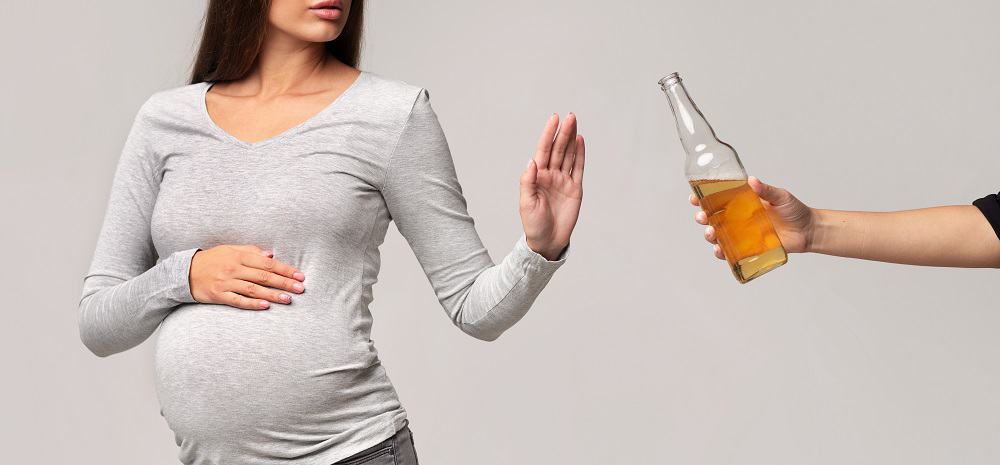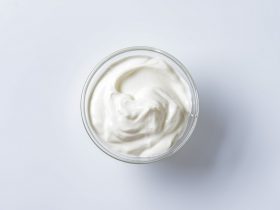Adults who wish to limit their alcohol intake may turn to non-alcoholic beer as the most suitable and safest alternative.
Drinking any form of alcohol during pregnancy is not recommended. Non-alcoholic beers may actually contain small amounts of alcohol that may still be harmful to the developing fetus. Hence, even “non-alcoholic” drinks are advised by medical experts to be avoided throughout pregnancy.
What is “Non-alcoholic Beer”?
Non-alcoholic beer is beer that contains minimal amounts of alcohol. It tastes similar to regular beer but contains significantly lower levels of alcohol. Some brands are even labeled as zero percent alcohol.
Alcohol Content
The U.S. Food and Drug Administration (US FDA, 2005) legally allows the use of the term “non-alcoholic” to products, such as soda, fruit juices and other flavored beverages, that may actually contain traces of alcohol derived from use of flavoring extracts or from natural fermentation.
Hence, according to United States law, non-alcoholic beers can contain up to 0.5% alcohol by volume (ABV), although some brands claim they have zero percent ABV. The US FDA (2005), however, only allows the use of the term “alcohol-free” for products containing no detectable alcohol.
Almost all non-alcoholic beers are made by removing the alcohol content from regular beer. This can be done by heating the beer to let the alcohol evaporate out. Another method is by straining the alcohol and water with the use of a fine filter, then the liquid can be added back to the filtered ingredients.
Once alcohol content is removed from the beer, it becomes flat. Carbon dioxide is needed to be added, just like with soda. Also, additional sugar is often provided to improve its taste.
Nutritional Content
The nutritional contents of non-alcoholic beers are similar to regular beers in terms of calories, protein and fat. They differ, however, with their carbohydrate and alcohol contents. Although lower in alcohol, non-alcoholic beers retain almost the same calories because of significant amounts (almost twice the number found in regular beers) of carbohydrates in the form of added sugars, which help improve taste once alcohol has been removed.
According to the U.S. Department of Agriculture (USDA) in 2019, 1 ounce of non-alcoholic beer contains 11 kilocalories, 0.1 grams protein, 0.04 grams fat, and 2.4 grams carbohydrates. In comparison, 1 ounce of regular beer contains 12.8 kilocalories, 0.1 grams protein, 0 grams fat, and 1 gram of carbohydrates.
Alcohol-free Beer
As already mentioned, non-alcoholic beer refers to all beers with any detectable level of alcohol up to 0.5% ABV. Meanwhile, alcohol-free beers are required by the US FDA to truly contain no detectable amounts of alcohol; They must be labeled as zero percent ABV.
True Life Recovery Detox notes that while in the USA, non-alcoholic beer refers to any detectable level of alcohol up to 0.5% ABV. In the United Kingdom and other countries, the term “low alcoholic beer” refers to anything less than 1.2% ABV. In the UK they also classify anything less than 0.5% ABV as being “non-alcoholic.”
Fetal Alcohol Syndrome
The adverse effects of alcohol on the developing fetus were first described by Lemoine et al. in 1968 and Jones & Smith in 1973 through independent case reports (Hoyme et al., 2016).
The diagnostic term “Fetal alcohol syndrome” (FAS) was originally coined to define the characteristic pattern of malformations seen in children exposed to chronic alcohol consumption by their mothers during pregnancy. These include (Jones & Smith, 1973):
- Intrauterine and postnatal growth retardation below the third percentile
- Specific facial malformations
- Short palpebral fissures 2 standard deviations below normal for age
- Smooth philtrum
- Thin vermilion border of the upper lip
- Mental retardation
This study sparked the scientific interest in the harmful effects of intrauterine exposure to alcohol (Corrales-Gutierrez et al., 2019). Later, as pediatricians became more familiar with the clinical presentation of children who were exposed to alcohol during the prenatal period, it became clear that the associated disabilities represent a spectrum from mild to severe forms (Hoyme et al., 2016).
Thus, the umbrella term “Fetal alcohol spectrum disorder” (FASD) was used in recent years to encompass the wide range of adverse fetal outcomes from alcohol exposure. The following are the common neurocognitive disorders and behavioral problems seen in children with FASD (Koren et al., 2003):
- Attention deficit hyperactive disorder
- Inability to foresee consequences
- Inability to learn from previous experience
- Inappropriate or immature behavior
- Lack of organization
- Learning difficulties
- Poor abstract thinking
- Poor adaptability
- Poor impulse control
- Poor judgement
- Speech, language and other communication problems
At present, a lot of evidences are available regarding the teratogenic effects of prenatal exposure to alcohol, with long-term consequences throughout the life cycle (Corrales-Gutierrez et al., 2019). Alcohol consumption during pregnancy is now known to cause physical, cognitive and behavioral complications in exposed newborns, referred to as FASD. The most severe form at the end of this spectrum is FAS (Adiong et al., 2014).
The range of FASD is composed of fetal alcohol syndrome, partial fetal alcohol syndrome, and alcohol-related neurodevelopmental disorder. FASD is currently a major cause of developmental disabilities worldwide (May et al., 2018).
Denny et al. in 2017 stated that alcohol consumption during pregnancy has become the most common non-hereditary preventable cause of intellectual disability. In addition to this, the percentage of pregnant women who drink or binge drink has been increasing since 2012.
In the United States and Canada, the estimated prevalence rate of FASD is up to 9.1 in every 1,000 babies born (Koren et al., 2003). In 2018, May et al. surveyed first-grade students in 4 regions of the United States from 2010 to 2016 to find the prevalence rate of FASD. They estimated a conservative prevalence of 11.3 to 50.0 per 1,000 children. But after using a weighted approach, prevalence went as high as 31.1 to 98.5 per 1,000 children.
Although FASD is attributed to chronic and high intakes of alcohol during pregnancy, experts maintain that there is no safe level of alcohol intake for pregnant women (Adiong et al., 2014). Because of the risks involved, pregnant women are advised to avoid all alcoholic beverages and even non-alcoholic beers with the supposedly littlest amounts of alcohol. The safest choice is to have absolutely no intake of any alcohol while pregnant.
Is it Safe to Drink Non-alcoholic Beer During Pregnancy?

Alcohol is a known teratogen and is one of the major causes of birth defects. It is able to cross the placenta, with fetal blood alcohol levels approaching maternal blood levels within 2 hours of drinking an alcoholic beverage (Dejong et al., 2019).
Drinking alcohol while pregnant has also been linked to increased rates of miscarriage. Avalos et al. in 2014 studied a cohort of more than 1,000 pregnant women from 1996 to 1998, and found a higher risk of spontaneous abortion in women who consumed four or more alcoholic drinks per week.
Unfortunately, non-alcoholic beers may contain more alcohol than what their labels say. A study by Goh et al. in 2010 investigated 45 brands of non-alcoholic beverages. Their results revealed that 29% of these drinks contained more alcohol than they claimed on their labels.
The same study also found that 6 brands of alcohol-free beers, with labels of zero percent ABV, actually contained alcohol at levels of up to 1.8% ABV. Hence, the authors concluded that pregnant women may be misled by these labels and inadvertently expose themselves and their unborn fetus to alcohol (Goh et al., 2010).
Moreover, Thierauf et al. in 2010 has shown that drinking non-alcoholic beer can still increase blood alcohol levels sharply and lead to positive tests for alcohol metabolites (ethyl glucuronide and ethyl sulphate) in the urine or breath. These metabolites are used as alcohol consumption markers, indicating the true presence of alcohol in these so-called non-alcoholic beers.
Consequently, some pregnant women might choose to drink beverages that are labeled as non-alcoholic or alcohol-free, expecting to appease their cravings without harming their unborn babies. Although there are no studies directly evaluating the safety of consuming non-alcoholic beverages during pregnancy, there are data indicating that such beverages might contain higher amounts of alcohol than what their labels claim (Adiong et al., 2014).
These findings suggest that pregnant women who consume non-alcoholic beverages may still be exposed to significant amounts of alcohol, especially when they think that these drinks are safe, and then they might consume several drinks at once (Adiong et al., 2014).
Therefore, pregnant women should keep in mind that even non-alcoholic beverages with labels of zero percent or less than 0.5% ABV may actually contain significantly higher amounts of alcohol. To practice precaution, abstinence from any type of alcohol consumption during pregnancy is the only safe option among pregnant women (Corrales-Gutierrez et al., 2019).
Because there is no known safe level of alcohol intake in pregnancy, abstinence from alcoholic and non-alcoholic beverages is the only way to eliminate completely any risk of FASD (Adiong et al., 2014). This has been recognized by different medical societies in various countries. The American College of Obstetricians and Gynecologists, Centers for Disease Control (CDC), Surgeon General, and the Society of Obstetricians and Gynecologists of Canada all recommend complete abstinence from drinking alcohol during pregnancy (Dejong et al., 2019).
The American Academy of Pediatrics further maintains the following stand (Hoyme et al., 2016):
- No level of alcohol intake during pregnancy is considered safe.
- There is no safe trimester that a pregnant woman can drink alcohol.
- All forms of alcohol pose the same risk.
- Binge drinking poses a dose-related risk to the developing fetus.
Final Thoughts
Non-alcoholic beers contain significantly less alcohol than regular beers. However, even minimal amounts of alcohol are still unsafe for pregnant women to drink and predispose their babies to develop birth defects and neurologic deficits.
Although adults from the general population may benefit from choosing non-alcoholic beers as alternative to reduce their alcohol intake, the same cannot be said for pregnant women. No safe level of alcohol has been determined. Therefore, the best option is absolutely no intake during pregnancy of any type of beer, regular, non-alcoholic, or even alcohol-free.
References
- https://www.healthline.com/
- Adiong, J. P., Kim, E., Koren, G., & Bozzo, P. (2014). Consuming non-alcoholic beer and other beverages during pregnancy and breastfeeding. Canadian Family Physician 60(8), 724-725. https://www.ncbi.nlm.nih.gov/pmc/articles/PMC4131961/
- Avalos, L. A., Roberts, S., Kaskutas, L. A., Block, G., & Li, D. (2014). Volume and type of alcohol during early pregnancy and the risk of miscarriage. Substance Use & Misuse 49(11), 1437-1445. doi: 10.3109/10826084.2014.912228
- Corrales-Gutierrez, I., Mendoza, R., Gomez-Baya, D., & Leon-Larios, F. (2019). Pregnant women’s risk perception of the teratogenic effects of alcohol consumption in pregnancy. Journal of Clinical Medicine 8(6), 907. doi: 10.3390/jcm8060907
- Dejong, K., Olyaei, A., & Lo, J. (2019). Alcohol use in pregnancy. Clinical Obstetrics and Gynecology 62(1), 142-155. doi: 10.1097/GRF.0000000000000414
- Denny, L., Coles, S., & Blitz, R. (2017). Fetal alcohol syndrome and fetal alcohol spectrum disorders. American Family Physician 96(8), 515-522. https://www.aafp.org/afp/2017/1015/p515.html
- Goh, Y. I., Verjee, Z., & Koren, G. (2010). Alcohol content in declared non- to low alcoholic beverages: Implications to pregnancy. The Canadian Journal of Clinical Pharmacology 17(1), e47-50. https://pubmed.ncbi.nlm.nih.gov/20051610/
- Hoyme, H. E., Kalberg, W., Elliott, A., Blankenship, J., Buckley, D., Marais, A. …, & May, P. (2016). Updated clinical guidelines for diagnosing fetal alcohol spectrum disorders. Pediatrics 138(2), e20154256. doi: 10.1542/peds.2015-4256
- Jones, K. L., & Smith, D. W. (1973). Recognition of the fetal alcohol syndrome in early infancy. Lancet 302(7836), 999-1001. doi: 10.1016/s0140-6736(73)91092-1
- Koren, G., Nulman, I., Chudley, A., & Loocke, C. (2003). Fetal alcohol spectrum disorder. Canadian Medical Association Journal 169(11), 1181-1185. https://www.ncbi.nlm.nih.gov/pmc/articles/PMC264960/
- Lemoine, P., Harousseau, H., & Borteyru, J. P., & Menuet, J. C. (1968). Children of alcoholic parents: Abnormalities observed in 127 cases. Ouest medical 21, 476-482.
- May, P., Chambers, C., Kalberg, W., Zellner, J., Feldman, H., Buckley, D., …, & Hoyme, H. E. (2018). Prevalence of fetal alcohol spectrum disorders in 4 US communities. JAMA Network 319(5), 474-483. doi: 10.1001/jama.2017.21896
- Thierauf, A., Gnann, H., Wohlfarth, A., Auwarter, V., Perdekamp, M. G., Buttler, K., …, & Weinmann, W. (2010). Urine tested positive for ethyl glucuronide and ethyl sulphate after the consumption of “non-alcoholic” beer. Forensic Science International 202(1-3), 82-85. doi: 10.1016/j.forsciint.2010.04.031
- U.S. Department of Agriculture (2019). FoodData central search results: Alcoholic beverage, beer, regular, all. https://fdc.nal.usda.gov/fdc-app.html#/food-details/168746/nutrients
- U.S. Department of Agriculture (2019). FoodData central search results: Malt beverage, includes non-alcoholic beer. https://fdc.nal.usda.gov/fdc-app.html#/food-details/174863/nutrients
- U.S. Food & Drug Administration. (2005). Compliance policy guide (CPG) Sec 510.400 Dealcoholized wine and malt beverages: Labeling. https://www.fda.gov/regulatory-information/search-fda-guidance-documents/cpg-sec-510400-dealcoholized-wine-and-malt-beverages-labeling




